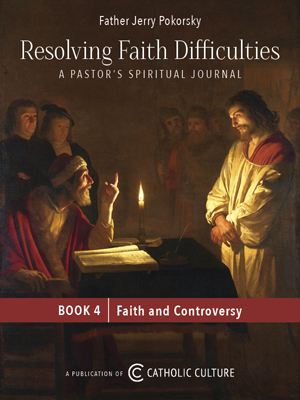Recovery from “Brain Death”: A Neurologist’s Apologia – Revisited After 27 Years
Summary
Beneath the nearly unanimous acceptance of the “brain death” concept lies widespread confusion surrounding both the precise signification of “brain death” and the rationale for its purported equivalence with death. As a neurologist with a keen interest in philosophy and bioethics, the author has striven over the years to articulate a coherent concept of human death, integrating clinical neurology with Aristotelian-Thomistic philosophy. This paper chronicles his gradual pendulum swing from “higher-brain” to “whole-brain” formulations, and most recently to a rejection of all purely brain-based diagnoses of death.
His earlier efforts to justify a neurological essence of human death were based on a seemingly incontrovertible thought experiment which supported the notion not only of “whole-brain death” but also of “neocortical death.” Subsequent clinical experience, however, with hydranencephalic children who were nevertheless conscious required abandoning the neocortical extension of the thought experiment and critically re-examining the prevailing neurologic dogmas concerning the vegetative state. His defense of “whole-brain death” culminated in participation in the 1989 Working Group of the Pontifical Academy of Sciences, which endorsed the concept in a consensus statement. Three years later, however, further considerations and a striking clinical case forced abandonment of the axiom that the brain is the “central integrating organ” of the body and consequent abandonment of even whole-brain formulations of death.
According to this revised view, death occurs when failure of multiple vital systems and bodily processes (including the brain) progresses beyond a systems-dynamical point-of-no-return, ordinarily (in the absence of protective therapies) presumably some 20-30 minutes or so after normothermic circulatory arrest. Although some “brain-dead” patients may be truly dead, it is not because their brains are dead but rather because of supra-critical multi-system damage; the remaining subset of “pure brain-dead” patients (with intact other organ systems) are not yet dead but are rather fatally injured and in a deep coma.
This view of death carries profound implications for transplantation ethics, but it does not necessarily preclude (at least in principle) licit harvesting of even unpaired organs of non-heart-beating donors, provided that asystole has persisted long enough for moral certainty that heartbeat and circulation will not spontaneously resume. Organ removal under such circumstances would neither cause nor hasten death, nor alter the functional integrity of the dying person’s body; thus, its moral species seems equivalent to that of removing a single kidney or part of a liver from a living donor. This approach to transplantation deserves further study by moralists.
Historically, the reasons for introducing the “brain-death” concept in the late 1960s were pragmatic and twofold: legitimizing the discontinuation of ventilators and the transplantation of unpaired vital organs. In retrospect, neither reason really required such a radical redefinition of death. Since the “central-integrator-of-the-body” rationale does not withstand careful logical and physiological scrutiny, the only remaining coherent rationale for equating “brain death” with death is the purported loss of “personhood” in a biologically live body, a rationale which entails a radical reconceptualization of “person” and which law and official medicine rightly reject but which many advocates of “brain death” implicitly or explicitly accept. History has amply demonstrated where a conceptual dissociation of personhood from biological human life tends to lead, and we would do well to reconsider whether “brain death” is any longer conceptually viable or even pragmatically necessary.
PDF file containing the entire updated article
This item 12733 digitally provided courtesy of CatholicCulture.org







